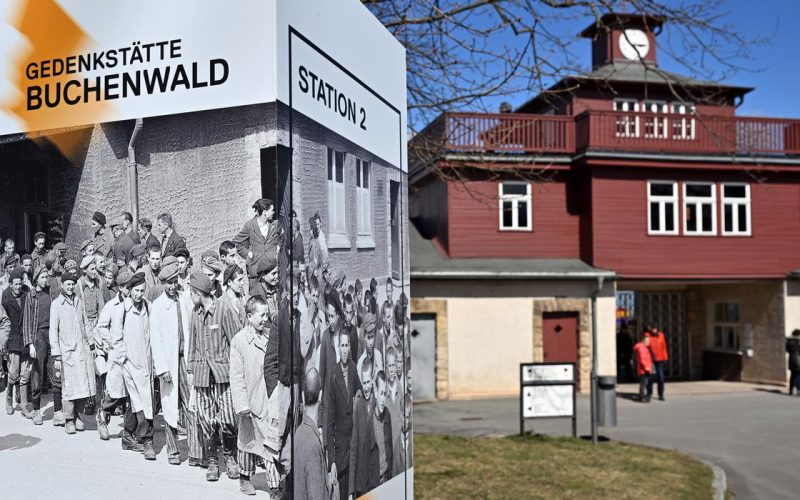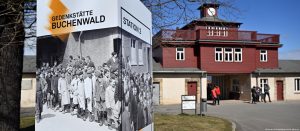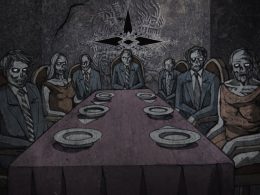The resurgence of far-right movements across Europe has manifested in various disturbing ways, one of which is the recent visits to historically significant sites like Buchenwald concentration camp. These visits are not mere acts of remembrance but often symbolize a brazen display of neo-Nazi ideology. This article delves into the implications of such visits, analyzing the motivations behind them and their broader societal impacts.
Historical Context of Buchenwald
Buchenwald, one of the largest concentration camps established by the Nazis during World War II, serves as a grim reminder of the atrocities committed during the Holocaust. Located near Weimar, Germany, Buchenwald saw the imprisonment and death of tens of thousands of Jews, political dissidents, Romani people, and other persecuted groups. Today, it stands as a memorial and museum, educating visitors about the horrors of the Holocaust and the dangers of totalitarian ideologies.
Rise of Far-Right Ideologies
In recent years, Europe has witnessed a troubling rise in far-right ideologies, marked by increased hate crimes, anti-immigrant rhetoric, and the resurgence of symbols and rhetoric reminiscent of the Nazi era. Various factors contribute to this rise, including economic instability, cultural shifts, and political polarization. These movements often seek to exploit societal fears and frustrations, positioning themselves as defenders of national identity and tradition.
The Symbolic Importance of Buchenwald Visits
For far-right groups, visiting Buchenwald is laden with symbolism. These visits are often orchestrated to challenge the established historical narrative of the Holocaust and to provoke outrage among those who oppose their views. By displaying swastikas and wearing jackboots, these groups are not only honoring their ideological forebears but also sending a clear message of defiance against the values of tolerance and remembrance.
Analysis of Recent Incidents
Motivation and Goals
The primary motivations behind these visits can be grouped into three main categories: ideological Swastikas reaffirmation, provocation, and recruitment. Ideological reaffirmation involves reaffirming their commitment to far-right beliefs. Provocation aims to elicit reactions from the public and authorities, thereby gaining media attention and furthering their agenda. Recruitment involves attracting new members by demonstrating the group’s boldness and willingness to challenge societal norms.
Societal Impact
The impact of these visits is multifaceted. On one hand, they serve to embolden other far-right sympathizers, creating a sense of unity and purpose. On the other hand, they cause distress and outrage among survivors, their descendants, and the broader community. Such actions can also lead to increased polarization and social tension, undermining efforts to promote tolerance and understanding.
| Aspect | Positive Impact for Far-Right Groups | Negative Impact on Society |
|---|---|---|
| Ideological Reaffirmation | Strengthens group identity and beliefs | Promotes hateful ideologies |
| Provocation | Gains media attention and notoriety | Distresses victims and their families |
| Recruitment | Attracts new members | Increases social division and tension |
Comparative Analysis with Other Far-Right Movements
Similarities with Historical Precedents
The tactics used by contemporary far-right groups bear striking similarities to those employed by Nazi sympathizers in the post-war period. Both eras saw the use of provocative symbolism and public demonstrations to assert their presence and ideology. Additionally, both movements leveraged economic and social uncertainties to garner support.
Differences in Context and Technology
However, there are notable differences. Modern far-right movements operate in a vastly different Swastikas technological landscape, using social media and digital platforms to spread their message and organize events. This allows for a more rapid and widespread dissemination of their ideology. Furthermore, contemporary legal frameworks and societal norms provide a different set of challenges and opportunities for these groups compared to their historical counterparts.
| Aspect | Historical Far-Right Movements | Contemporary Far-Right Movements |
|---|---|---|
| Symbolism and Tactics | Use of swastikas, public rallies | Similar use of symbols, social media |
| Technology | Limited to print and radio | Extensive use of internet and social media |
| Societal Response | Post-war denazification efforts | Modern legal frameworks and societal norms |
Response from Authorities and Civil Society
Government Measures
Governments across Europe have responded to the rise of far-right activities with varying degrees of firmness. Measures include stricter enforcement of hate speech laws, increased surveillance of far-right groups, and educational initiatives aimed at countering extremist ideologies. However, these efforts are often met with criticism regarding their effectiveness and potential infringement on civil liberties.
Civil Society Initiatives
Civil society organizations play a crucial role in combating the rise of far-right ideologies. These groups organize counter-protests, educational programs, and community outreach initiatives to promote tolerance and understanding. Survivor organizations and Holocaust memorial institutions also work tirelessly to preserve the memory of the Holocaust and educate new generations about its lessons.
| Response | Government Measures | Civil Society Initiatives |
|---|---|---|
| Law Enforcement | Stricter hate speech laws, increased surveillance | Counter-protests, legal advocacy |
| Education | School curricula, public awareness campaigns | Educational programs, memorial events |
| Community Engagement | Social cohesion programs | Community outreach, support networks |
Conclusion
The visits by emboldened far-right groups to sites like Buchenwald underscore Swastikas the persistent and evolving threat posed by extremist ideologies. These actions challenge societal values and historical memory, requiring a concerted response from governments, civil society, and individuals alike. By understanding the motivations and impacts of these movements, we can better equip ourselves to counter their influence and uphold the principles of tolerance and remembrance.
In the face of such challenges, it is imperative to remain vigilant and proactive. Only through collective effort and unwavering commitment to the lessons of history can we ensure that the horrors of the past are not repeated.











